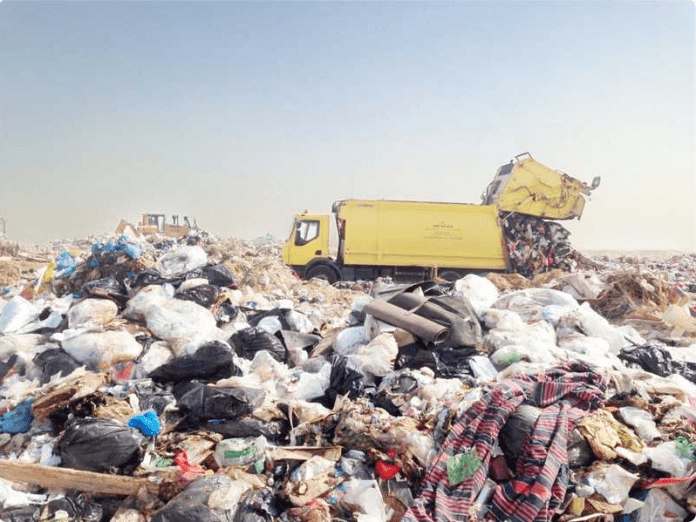The Environment Public Authority has sounded the alarm again, against the danger of “random disposal” of waste in the country, especially solid waste, and said in a recent report that 6 landfills are “fully responsible for polluting Kuwait’s air with gases,” and that “96% of emissions all over the country are from 3 landfills only.
Surprisingly, despite the small area of the country, it has a large number of 19 landfills spread across, of which only 3 are are active, 11 are closed and contain 56 million cubic meters of waste, reports a local Arabic daily.
The landfills in Kuwait, an imminent environmental and health danger, and the accumulation of waste and its wrong filling or random disposal, are all dangerous factors for the emission of toxic gases and unpleasant odors, and possibly the outbreak of fires, which negatively affects the country’s environment and the health of its residents. The EPA revealed 6 landfills currently in operation, received 75% of the total waste during the past decades, 3 of which receive municipal waste.
In a recent report, the copy of which has been obtained by the daily, the EPA stated that the landfills of “Jahra”, “South of the Seventh Ring Road” and “Mina Abdullah” weigh the incoming waste and fill it without prior treatment, while 96% of the total gases are emitted from these three sites and said the “2040 national waste management strategy in the country” includes the prevention of landfills of untreated waste with a high organic content, which will represent a significant contribution to climate protection.
It indicated that 11 landfills were closed without completing their full rehabilitation, as they contain 56 million cubic meters of waste. Despite their closure, the report indicated that the landfills still emit greenhouse gases and form leaching water resulting from waste many years after the last load was filled, which makes it necessary to monitor the sites carefully and rehabilitate them.
Sources pointed out that the possibility of reusing the land for closed landfills is limited due to the uncontrolled emissions of gases, which pose a danger that leads to explosion or fire, not to mention that the decomposition of waste inside the land makes it unstable and causes soil subsidence.
The EPA cited, for example, Jleeb Al-Shuyoukh, located directly next to Kuwait International Airport, and the extent of its impact on the airport, because the recent expansion of the airport necessitates taking into account the conditions of the landfill site, and on the other hand, the possibility of the dumped waste being a potential source of energy because it contains methane gas that can be used.”
The report pointed out that this landfill is engineered and equipped with an isolation system to prevent the intrusion of hazardous materials into the soil, and the materials entering it are being recorded and samples taken to check their properties.

















